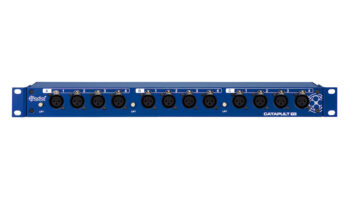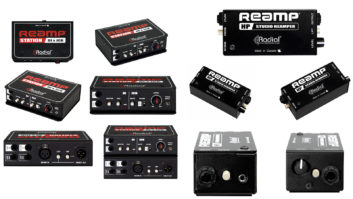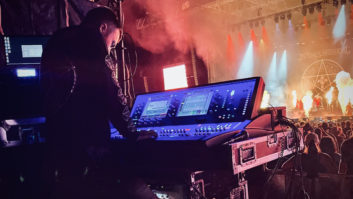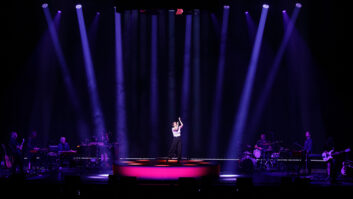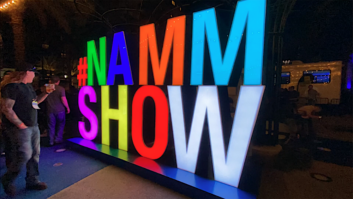Vancouver, BC (April 23, 2013)—Having finally been inducted into the Rock N Roll Hall of Fame last week, Rush kicks off its latest tour this evening in Austin, TX. It marks FOH engineer Brad Madix’s fifth jaunt with the band, but he still faces new challenges every time, like recently when he was faced with matching impedance and pre-amplification for the band’s string section, consisting of six violins and two cellos.

“I’d worked with strings in the past, but it was always either in a very quiet setting with minimal sound reinforcement or the violins were strictly electric,” Madix said. “On Rush’s Clockwork Angels tour, the band definitely meant for the strings to be featured and acoustic. The main challenge was going to be fitting pickups to the instruments without tampering with them too much and getting a great sound with maximum isolation. All in a high-gain environment.”
“All of the piezoelectric pickups are very Hi-Z,” Madix continued. “Obviously we were going to need a DI for these and it was probably going to have to be an active one. When I started digging into which would make the best solution, I was not surprised to find that input impedance specs on DIs are generally a bit lower than we were going to need. We found preamp solutions, but they offered too many bells and whistles for my taste. We just wanted to get the signal to the consoles in the best possible shape.”
Knowing that he would need a specific DI, Madix contacted Radial president Peter Janis to see if the company could provide him with a product that would fit his needs.
“We had been having conversations with a few other acoustic artists and noticed that there was a definite need for a DI that would sound good with piezos,” explained Janis. “The challenge is that unless the pickup sees a very high input impedance, it tends to sound peaky and edgy. We had just finished building a prototype and I sent him the first one to play with. The PZ-DI can be set to 10 meg ohms to address this and has a built-in high pass filter to eliminate resonance, which can cause runaway feedback.”
“With the PZ-DI, we were able to integrate multiple piezoelectric devices seamlessly and with glorious results. Anyone who is just plugging a PZ transducer into any random DI and hoping for the best is probably missing out on much better tonality and dynamic range. It’s nice that there are passionate designers and engineers out there paying attention to these details,” said Madix.
Madix’s tool box for this tour also includes some other key Radial gear: “We have Radial DIs everywhere. Keyboards, drum electronics, samplers, guitar effects. They are all over the stage! Also, we are using the SW8s for switching to redundant backup systems on the tour,” he said.
Radial Engineering
www.radialeng.com

